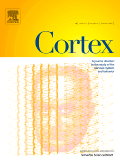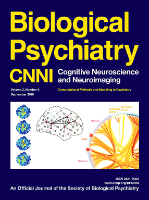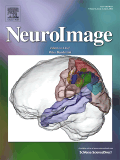
CORTEX
metrics 2024
Transforming Knowledge into Practice in Cognitive Science
Introduction
CORTEX is a premier international journal published by Elsevier Masson, focusing on the cutting-edge areas of cognitive neuroscience, psychology, and neurology. With an impressive impact factor that places it in Q1 quartiles across multiple categories such as Cognitive Neuroscience and Neuropsychology, this journal serves as a vital resource for researchers, clinicians, and students alike. Established in 1964, CORTEX has continued to excel in disseminating high-quality scholarly work, offering insights that significantly enhance our understanding of the brain's functioning and behavior. Although not an open-access publication, it provides various access options to ensure the dissemination of knowledge is as wide-reaching as possible. As the field of cognitive psychology evolves, CORTEX remains at the forefront, fostering an environment for interdisciplinary collaboration and innovation. Researchers seeking to stay engaged with the latest advancements will find CORTEX an indispensable tool for their professional development.
Metrics 2024
 1.33
1.33 3.20
3.20 3.70
3.70 138
138Metrics History
Rank 2024
IF (Web Of Science)
JCI (Web Of Science)
Quartile History
Similar Journals

NEUROSCIENCE AND BIOBEHAVIORAL REVIEWS
Pioneering insights into behavioral and cognitive neuroscience.NEUROSCIENCE AND BIOBEHAVIORAL REVIEWS, published by PERGAMON-ELSEVIER SCIENCE LTD in the United Kingdom, serves as a leading interdisciplinary platform for the dissemination of pioneering research and reviews in the realms of Neuroscience, Behavioral Neuroscience, Cognitive Neuroscience, and Neuropsychology. With an impressive impact factor reflected in its Q1 ranking across multiple categories for 2023, the journal is recognized for its rigorous peer-reviewed content that influences the advancement of scientific knowledge in behavioral and cognitive research. An essential resource for researchers, professionals, and students alike, the journal emphasizes the exploration of complex neural mechanisms that underlie behavior and cognitive processes. Despite being a subscription-based publication, the journal's extensive archive from 1978 to 2024 fosters a wealth of knowledge designed to inspire and facilitate future advancements within the field.

RESTORATIVE NEUROLOGY AND NEUROSCIENCE
Exploring Therapeutic Frontiers: Where Neurology Meets NeuroscienceRESTORATIVE NEUROLOGY AND NEUROSCIENCE, published by IOS PRESS, is a premier journal dedicated to advancing the fields of neurology and neuroscience. Since its inception in 1989, this journal has played a crucial role in disseminating cutting-edge research findings and innovative therapeutic approaches that aim to restore neurological function and improve patient outcomes. With a focus on developmental neuroscience and clinical neurology, the journal holds a 2023 Scopus ranking of #129 out of 400 in clinical neurology, and #15 out of 37 in developmental neuroscience, reflecting its significant influence in these domains. Although it operates on a non-open access model, RESTORATIVE NEUROLOGY AND NEUROSCIENCE offers valuable insights for researchers, healthcare professionals, and students seeking to deepen their understanding of neural restoration mechanisms and therapeutic strategies. Located in Amsterdam, Netherlands, the journal continues to foster scholarly dialogue and innovation, contributing to the global advancement of neuroscience and neurology.

NEUROSCIENCE RESEARCH
Championing High-Quality Neuroscience ResearchNEUROSCIENCE RESEARCH, published by Elsevier Ireland Ltd, is a leading journal in the field of neuroscience, with a notable reputation for disseminating high-quality research that spans a variety of topics within the discipline. With an ISSN of 0168-0102 and an E-ISSN of 1872-8111, this journal serves as a vital platform for both established researchers and emerging voices in the field. Ranking in the Q2 quartile in both Medicine and Neuroscience categories, it has been recognized as a reliable source of innovative findings since its inception in 1984, with continuous publication through 2024. Although it does not currently offer Open Access options, the journal is indexed in Scopus, holding a significant position at Rank #48/113 in General Neuroscience, reflecting its contribution to advancing the understanding of neural mechanisms across various contexts. With its address anchored in Ireland, NEUROSCIENCE RESEARCH plays an essential role in bridging scientific inquiry and practical applications, making it an indispensable resource for researchers, professionals, and students dedicated to the burgeoning field of neuroscience.

Brain Structure & Function
Exploring the Interplay of Anatomy and FunctionBrain Structure & Function is a premier peer-reviewed journal published by Springer Heidelberg, focusing on the intricate relationships between brain anatomy and its functional implications. With a significant presence in the academic community, the journal is recognized for its high impact, evidenced by its rankings in the Q1 categories of Anatomy and Histology and its commendable position in the Neuroscience field. It has successfully maintained a convergence of research and innovation from 2007 to 2024, providing critical insights that drive forward our understanding of the brain. The journal's outstanding metrics, including a ranking of #6 in Anatomy and #18 in Histology within Scopus, highlight its role in shaping modern research. Offering open access options, Brain Structure & Function ensures that its cutting-edge findings and methodologies are accessible to a broad audience of researchers, professionals, and students eager to contribute to the evolution of neuroscience. With its comprehensive scope and commitment to high-quality research, this journal is an essential resource for anyone invested in the complexities of brain structure and their functions.

Network Neuroscience
Charting New Territories in Neuroscience and MathematicsNetwork Neuroscience is a premier open-access journal published by MIT Press, focusing on the interdisciplinary nexus of neuroscience, applied mathematics, artificial intelligence, and computer science. Since its inception in 2017, the journal has established itself as a leading outlet for innovative research and cutting-edge methodologies, ensuring disseminated knowledge is freely accessible to all. With an impressive Q1 ranking in multiple categories including Applied Mathematics, Artificial Intelligence, Computer Science Applications, and Neuroscience, it serves as a vital platform for scholars, professionals, and students to explore the intricate networks that underpin cognitive processes and brain function. The journal is committed to advancing the understanding of complex neural mechanisms through interdisciplinary approaches and remains a crucial resource for anyone engaged in the burgeoning fields of network science and neuroscience research.

Biological Psychiatry-Cognitive Neuroscience and Neuroimaging
Decoding Mental Health: Where Science Meets InsightBiological Psychiatry-Cognitive Neuroscience and Neuroimaging is a leading interdisciplinary journal published by Elsevier, focusing on the convergence of biological psychiatry, cognitive neuroscience, and advanced neuroimaging techniques. With its prestigious Q1 rankings across essential categories such as Biological Psychiatry, Cognitive Neuroscience, and Neurology (clinical), this journal is at the forefront of research that examines the complexities of mental health through innovative methodologies. Covering a broad spectrum of topics from neurobiological mechanisms to clinical applications, it aims to provide a platform for scholars and practitioners to exchange insights on mental disorders and their neurobiological underpinnings. The impact factor and Scopus rankings further underscore its importance, with rankings highlighting its position in the top percentiles of related disciplines. By fostering an open exchange of ideas and promoting cutting-edge research, this journal is an essential resource for researchers, professionals, and students dedicated to advancements in the understanding and treatment of psychiatric and neurological conditions.

NeuroImage-Clinical
Unlocking the Mysteries of the Brain with Open Access KnowledgeNeuroImage-Clinical is a premier open access journal published by Elsevier Science Ltd, dedicated to advancing the field of clinical neuroimaging and its applications in a variety of neurological disorders. With an ISSN of 2213-1582, this journal has established itself as a leading source of innovative research since its inception in 2012, now continuing through 2024. Recognized for its high impact, it occupies the top quartile (Q1) in prestigious categories such as Cognitive Neuroscience, Neurology, and Radiology, affirming its relevance in clinical and research settings. Its Scopus rankings further exemplify its significant contribution to the disciplines of Radiology and Neurology, consistently placing it among the top tiers of journals in these fields. This journal not only provides critical insights for researchers and professionals but also serves as a valuable resource for students, fostering an understanding of the complexities in neuroimaging techniques and their implications for patient care. With open access options ensuring broad dissemination of knowledge, NeuroImage-Clinical plays a pivotal role in enhancing collaboration and innovation within the global neuroscience community.

NEUROIMAGE
Illuminating the Intricacies of the Human MindNEUROIMAGE, published by Academic Press Inc Elsevier Science, is a leading international journal dedicated to advancing the fields of cognitive neuroscience and neurology. With an impressive impact factor that places it in the Q1 category for both disciplines, NEUROIMAGE stands at the forefront of disseminating high-quality research that employs advanced imaging methods to elucidate the workings of the human brain. As a pivotal platform since its inception in 1992, this journal has continued to thrive, embracing Open Access publishing since 2020 to ensure wider dissemination and accessibility of cutting-edge findings. With a Scopus rank of 7th in cognitive neuroscience and 13th in neurology, and situated in the 94th and 93rd percentiles respectively, NEUROIMAGE serves as an invaluable resource for researchers, professionals, and students alike seeking to explore the intricate relationships between brain structure and function. For more information, please visit their office at 525 B ST, STE 1900, SAN DIEGO, CA 92101-4495.

Brain and Behavior
Connecting Minds: Where Neuroscience Meets Behavior.Brain and Behavior is a premier open-access journal published by WILEY, dedicated to advancing the field of Behavioral Neuroscience. With its ISSN 2162-3279, the journal has established itself as a vital resource for researchers, professionals, and students alike, fostering the dissemination of cutting-edge research since its inception in 2011. Renowned for its rigorous peer-review process, it enjoys a commendable Q2 ranking within the field, reflecting its impactful contributions and relevance in the scientific community. The journal not only emphasizes innovative studies that bridge behavioral science and neuroscience but also serves as a platform for diverse methodologies and interdisciplinary approaches. Accessible [open access](https://onlinelibrary.wiley.com/journal/21623279), Brain and Behavior invites submissions that explore the neural mechanisms underlying behavior, aiming to engage a global audience eager to expand the boundaries of knowledge in this dynamic field. Positioned in the heart of the United States, at 111 River St, Hoboken, NJ, it is strategically placed to collaborate with leading institutions and researchers worldwide.

Frontiers in Human Neuroscience
Bridging Neuroscience with Behavioral InsightsFrontiers in Human Neuroscience is a premier open access journal published by FRONTIERS MEDIA SA, dedicated to advancing the understanding of the complexities of human neuroscience. With an ISSN of 1662-5161, the journal has established its prominence in various fields, achieving a Q2 ranking in categories such as Behavioral Neuroscience, Neuropsychology and Physiological Psychology, and Psychiatry and Mental Health as of 2023. Since its inception in 2008, Frontiers in Human Neuroscience has consistently contributed to the scholarly dialogue by offering a platform for innovative research that bridges the gap between neuroscience and behavioral science. The journal's rigorous peer-review process and commitment to open access ensures that findings are readily available, promoting collaboration and progress within the academic community. With an impact on neuroscience disciplines, it stands at the forefront of the field, inviting researchers, professionals, and students alike to engage with cutting-edge studies and developments. The journal's address is located in Lausanne, Switzerland, where it continues to flourish as a hub for neurobiological exploration.